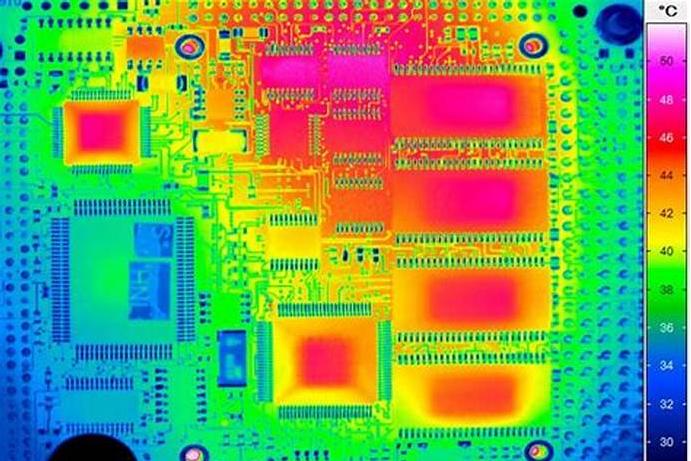When designing a printed circuit board (PCB), every detail matters, including the color of the solder mask. But does solder mask color really impact thermal management? The short answer is: yes, but the effect is often minimal compared to other design factors. Darker colors like black absorb more heat, while lighter colors like white reflect it, potentially aiding in heat dissipation. However, for most high-power PCB designs, factors like thermal vias, copper thickness, and heat sinks play a far larger role in PCB cooling than solder mask color.
In this comprehensive guide, we’ll dive deep into the relationship between solder mask color and thermal management. We’ll explore how different colors affect heat dissipation, discuss practical considerations for high-power PCB design, and provide actionable tips for optimizing PCB thermal performance. Whether you're an engineer working on complex designs or a hobbyist looking to improve your PCB cooling, this article will help you make informed decisions.
What Is a Solder Mask and Why Does It Matter?
A solder mask is a thin layer of polymer applied to the surface of a PCB to protect the copper traces from oxidation, prevent solder bridges during assembly, and insulate against electrical shorts. It also gives the PCB its characteristic color—often green, but available in black, red, blue, white, and more. While its primary role is protection, the solder mask can influence thermal management to a small degree by affecting how heat is absorbed or reflected on the board’s surface.
Thermal management is critical in PCB design, especially for high-power applications where components generate significant heat. Poor PCB cooling can lead to component failure, reduced lifespan, and unreliable performance. As engineers focus on optimizing heat dissipation, even small factors like solder mask color come into play. Let’s break down how this works and whether it should influence your design choices.

How Solder Mask Color Affects Heat Dissipation
The color of an object impacts how it interacts with heat and light. This principle applies to solder masks on PCBs as well. Here’s how different colors behave in terms of heat absorption and reflection:
- Black Solder Mask Thermal Performance: Black absorbs more light and heat compared to lighter colors. This means a black solder mask can trap heat on the PCB surface, potentially increasing the board’s temperature by a small margin. In high-power PCB designs, this could exacerbate thermal issues if other cooling methods are insufficient.
- White Solder Mask: White reflects more light and heat, which can help reduce the amount of heat absorbed by the PCB. This might contribute to better heat dissipation in environments with direct sunlight or high ambient temperatures, though the effect is subtle.
- Green, Red, and Blue Solder Masks: These colors fall in the middle of the spectrum. Green, the traditional choice, offers a balance between heat absorption and reflection. Red and blue have similar properties, with slight variations depending on their shade and the specific material used.
While these differences exist, studies and practical tests suggest that the impact of solder mask color on PCB thermal management is minimal—often less than a 1-2°C difference in operating temperature under typical conditions. For most designs, the solder mask’s thickness (usually 0.8 to 1.2 mils) and material composition have a greater effect on heat dissipation than its color.
Other Factors That Impact PCB Thermal Management
While solder mask color plays a small role in heat dissipation, other design elements have a much larger impact on PCB cooling. When working on high-power PCB designs, prioritize these factors for effective thermal management:
1. Thermal Vias
Thermal vias are small holes filled or plated with copper that transfer heat from one side of the PCB to the other, often connecting to a heat sink or ground plane. For high-power components like power transistors or LEDs, placing an array of thermal vias (e.g., 0.3 mm diameter, spaced 1.2 mm apart) can reduce component temperatures by 5-10°C or more, depending on the design.
2. Copper Thickness and Layout
The thickness of copper layers directly affects how much heat a PCB can dissipate. Using 2 oz/ft2 copper (70 μm thick) instead of the standard 1 oz/ft2 (35 μm) can improve heat spreading by up to 30%. Additionally, designing large copper pours or planes near heat-generating components helps distribute heat across the board.
3. Heat Sinks and Cooling Solutions
For high-power applications, attaching heat sinks to critical components is one of the most effective ways to manage heat. A heat sink with a thermal resistance of 2°C/W can keep a power IC within safe operating temperatures even under heavy load. Active cooling solutions like fans can further reduce temperatures by 10-20°C in extreme cases.
4. Component Placement
Placing heat-generating components away from each other and near the edges of the PCB can prevent heat buildup. For example, spacing two high-power ICs at least 10 mm apart can reduce localized temperature spikes by 3-5°C compared to clustering them together.
Compared to these strategies, the choice of solder mask color is a minor consideration. However, in specific scenarios—such as outdoor applications exposed to sunlight—opting for a lighter color like white could provide a small edge in heat dissipation.

Practical Considerations for Choosing Solder Mask Color
While thermal performance is a factor, other practical reasons often drive the choice of solder mask color in PCB design. Here are some key considerations:
- Visibility for Inspection: Green solder masks are the industry standard because they provide high contrast against copper traces and components, making visual inspection easier. Black solder masks, while sleek-looking, can make defects harder to spot, potentially increasing manufacturing errors.
- Aesthetics and Branding: Many companies choose solder mask colors to align with their branding. A red or blue mask can make a product stand out, even if it doesn’t significantly impact thermal performance.
- Cost and Availability: Green solder masks are often the most cost-effective and widely available option. Specialty colors like white or black may come at a slight premium or have longer lead times, depending on the manufacturer.
- Environmental Factors: For PCBs used in outdoor or high-radiation environments, a lighter color might help reflect heat and UV light, reducing thermal stress on the board over time.
For most engineers, the decision on solder mask color will balance these factors alongside any minor thermal benefits. If heat dissipation is a critical concern, focus on the design elements mentioned earlier before worrying about color.
Tips for Optimizing PCB Cooling in High-Power Designs
If you’re working on a high-power PCB design, effective thermal management should be a top priority. Here are some actionable tips to keep your board cool, regardless of solder mask color:
- Use Simulation Tools: Before finalizing your design, use thermal simulation software to model heat flow across the PCB. Tools can predict temperature rises (e.g., a 15°C increase near a power regulator) and help you adjust layouts or add cooling features.
- Increase Board Thickness: A thicker PCB (e.g., 2.0 mm instead of 1.6 mm) can handle more heat due to increased material mass and better heat spreading.
- Select High-Thermal-Conductivity Materials: Consider using substrates with higher thermal conductivity, such as metal-core PCBs, which can dissipate heat up to 10 times better than standard FR-4 materials (thermal conductivity of 0.3 W/m·K vs. 3-10 W/m·K for metal-core).
- Optimize Airflow: If your design allows, position the PCB in a way that maximizes natural or forced airflow. Even a small increase in airflow can reduce temperatures by 5-10°C.
- Monitor Operating Conditions: Test your PCB under real-world conditions to ensure it stays within safe temperature limits (typically below 85°C for most components). Use thermal imaging cameras to identify hot spots.
By focusing on these strategies, you can achieve robust PCB cooling without relying on solder mask color as a primary solution.

Conclusion: Should Solder Mask Color Influence Your Thermal Management Strategy?
In the realm of PCB thermal management, solder mask color does have a measurable effect on heat dissipation, with darker colors like black absorbing more heat and lighter colors like white reflecting it. However, the impact is small—often negligible compared to other design choices like thermal vias, copper thickness, and heat sinks. For most high-power PCB designs, focusing on these critical elements will yield far better results in PCB cooling than changing the solder mask color.
That said, if your PCB operates in a unique environment (e.g., direct sunlight or extreme heat), choosing a lighter solder mask color could provide a minor advantage. Ultimately, the best approach is to prioritize proven thermal management techniques while selecting a solder mask color that meets your aesthetic, branding, and inspection needs.
At ALLPCB, we’re committed to helping you design and manufacture PCBs that perform reliably under any condition. Whether you’re exploring black solder mask thermal properties or optimizing high-power PCB designs, our team is ready to support you with expert guidance and high-quality manufacturing services. Let’s build cooler, more efficient boards together.
 ALLPCB
ALLPCB







